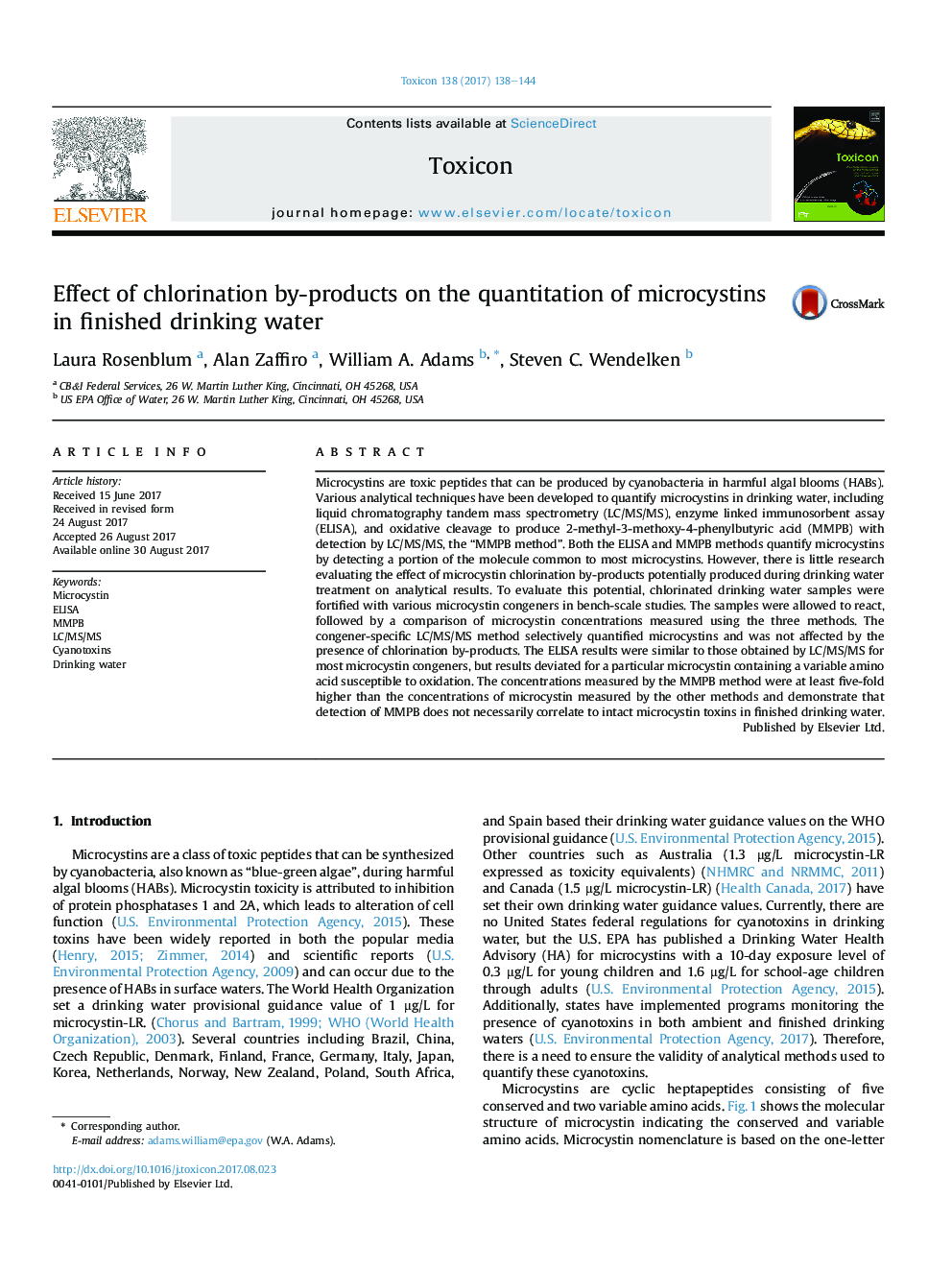| کد مقاله | کد نشریه | سال انتشار | مقاله انگلیسی | نسخه تمام متن |
|---|---|---|---|---|
| 5519214 | 1544098 | 2017 | 7 صفحه PDF | دانلود رایگان |
- Three analytical methods for microcystins were compared to evaluate interference from chlorination by-products.
- An indirect method detecting MMPB yielded high concentrations due to chlorination by-products for all microcystins tested.
- Interferences with an ELISA method were only detected when the site of modification occurred on a variable amino acid.
Microcystins are toxic peptides that can be produced by cyanobacteria in harmful algal blooms (HABs). Various analytical techniques have been developed to quantify microcystins in drinking water, including liquid chromatography tandem mass spectrometry (LC/MS/MS), enzyme linked immunosorbent assay (ELISA), and oxidative cleavage to produce 2-methyl-3-methoxy-4-phenylbutyric acid (MMPB) with detection by LC/MS/MS, the “MMPB method”. Both the ELISA and MMPB methods quantify microcystins by detecting a portion of the molecule common to most microcystins. However, there is little research evaluating the effect of microcystin chlorination by-products potentially produced during drinking water treatment on analytical results. To evaluate this potential, chlorinated drinking water samples were fortified with various microcystin congeners in bench-scale studies. The samples were allowed to react, followed by a comparison of microcystin concentrations measured using the three methods. The congener-specific LC/MS/MS method selectively quantified microcystins and was not affected by the presence of chlorination by-products. The ELISA results were similar to those obtained by LC/MS/MS for most microcystin congeners, but results deviated for a particular microcystin containing a variable amino acid susceptible to oxidation. The concentrations measured by the MMPB method were at least five-fold higher than the concentrations of microcystin measured by the other methods and demonstrate that detection of MMPB does not necessarily correlate to intact microcystin toxins in finished drinking water.
194
Journal: Toxicon - Volume 138, November 2017, Pages 138-144
